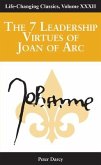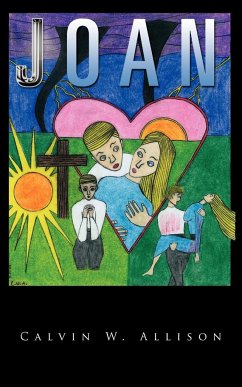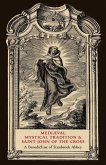Joan of Arc's fascinating life ended when she was 19 years old-burned at the stake after leading thousands of men in military battles that were decisive in ending the Hundred Years War. She was officially appointed as commander-in-chief of the French army by King Charles VII, but he later abandoned her when he could have intervened to save her from execution. In 1431, from January 9 to May 30, Joan was put on trial because "the judges found this woman superstitious, a witch, idolatrous, a conjurer of demons, blasphemous towards God and His saints, a schismatic and greatly erring in the faith of Jesus Christ." The transcripts of her trial were written by Guillaume Manchon, a notary, who produced the original documentation with oversight and assistance from two other notaries, Guillaume Colles and Nicolas Taquel. Those transcripts were written in Medieval/Middle French, and after the trial Manchon and one of the judges, Thomas de Courcelles, translated the Middle French into Latin and five handwritten copies were made. The first unabridged translations of those original Latin transcripts were published in modern French in 1841 by Jules Etienne Joseph Quicherat and in English in 1932 by W.P. Barrett. This publication-Joan of Arc: Her Trial Transcripts-offers a shorter, abridged version that was edited solely for readability in modern English. Some of the most controversial issues surrounding Joan of Arc involve claims she was a lesbian or perhaps even a transgender person. Historians have criticized writers such as Vita Sackville-West (1892-1962) for making such claims. Historians correctly noted that bedding was relatively scarce in the 15th century, and two women sleeping in the same bed cannot be construed as evidence of sexual intimacy. Historians also addressed the transgender claims by stating the need for Joan to protect herself from sexual assault in prison as well as the need to dress in men's clothes during military operations. While both of those arguments are true, they neglect to address the evidence in its entirety, which is documented in Joan of Arc's trial transcripts. The Epilogue in this book by Emilia P. Sanguinetti addresses the theological debate occurring today within the Catholic Church regarding its relationship with the LGBT community. Theology to support Catholic gay marriage is also addressed based on the 2005 papal encyclical "God is Love," which has an overarching theme that eros (erotic love) is perfected by agape (self-sacrificial love). A quiet revolution is occurring today in the Catholic Church. Gay, lesbian, bisexual and transgender Catholics are beginning to claim their rightful place in the Church. Also, with the publication of the 2016 apostolic letter, "Amoris Laetitia," many bishops, priests and laypeople claim they have the doctrinal foundation for allowing divorced and remarried Catholics to receive Holy Communion. Both of these topics are fully covered in the Epilogue, as well as theories about the origin of Joan's "voices" (the mysterious interior locutions that guided her behavior). Joan clearly and forcefully said her "voices" commanded her to wear men's clothes, and that she could not wear women's clothes under any circumstances-even when wearing women's clothes was a requirement for her to receive Holy Communion.
Hinweis: Dieser Artikel kann nur an eine deutsche Lieferadresse ausgeliefert werden.
Hinweis: Dieser Artikel kann nur an eine deutsche Lieferadresse ausgeliefert werden.








